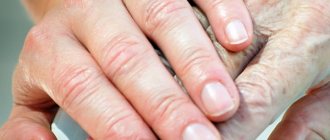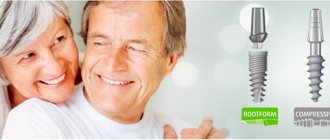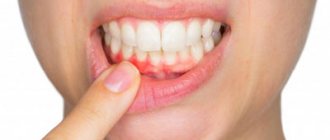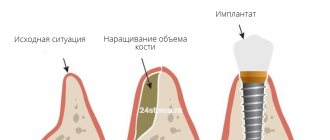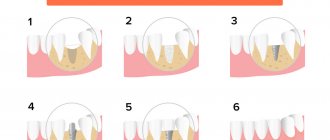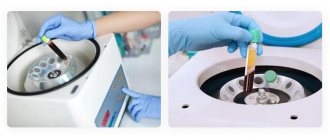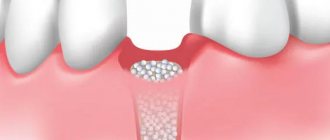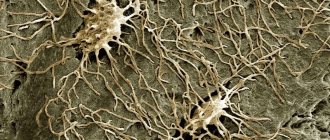Dear friends, today’s topic of conversation, in fact, should be a prologue to all our publications devoted to bone tissue augmentation before implantation. We have already written about sinus lifting, guided bone regeneration, bone blocks and osteotomy, we talked about when and why this should be done, but we left out of the scope of publications perhaps the most interesting question:
Why does bone atrophy occur in the first place?
What is atrophy? What are its reasons? Why does it develop rapidly in some people, literally in a month or two:
and someone walks without teeth for years - and there is no loss of bone tissue?
Is it possible to predict the degree of bone tissue atrophy even before tooth extraction and is there a way to prevent it?
The answers to these questions are important, if only because without understanding the biological mechanisms of atrophy, it is impossible to determine the need for the same preventive augmentation of the socket of an extracted tooth, it is impossible to CORRECTLY choose the method of bone tissue augmentation for a specific clinical case and, most importantly, it is impossible to give a clear and long-term prognosis as a result of osteoplasty.
I will say even more - in many ways, almost all unsuccessful outcomes of bone tissue augmentation are explained, among other things, by a lack of understanding of the processes occurring in the jawbone after tooth extraction. That's why this knowledge is important.
So,
Atrophy is...
According to medical textbooks, atrophy means a lifetime decrease in the volume of cells, tissues and organs , accompanied by a decrease or cessation of their functions. In relation to dentistry and implantology, we can define atrophy as a change in the linear dimensions and volume of the alveolar ridge after the removal of a tooth or teeth.
Atrophy can be reversible or irreversible.
Reversible atrophy is usually caused by the cessation of functioning of an organ or tissue. So, if you do not use your hand for a long time (for example, after a fracture), the muscles of the hand will atrophy.
However, once the function returns, they quickly return to normal.
Irreversible atrophy has a number of causes, of which dysfunction is just one of them. Thus, atrophy of the heart muscle is accompanied by its sclerosis, the replacement of the muscle fibers themselves with connective tissue. The result is chronic heart failure, for which only symptomatic treatment exists so far.
The reversibility of brain atrophy in some people remains controversial.
, atrophy of the alveolar ridge after tooth extraction is classified as dysfunctional, i.e., associated with cessation of function. It would seem a very simple mechanism - “no teeth, no load on bone tissue - presto, atrophy!”
But, in reality, not everything is so simple.
First, dysfunctional atrophy is usually reversible (see muscle example).
Secondly, and this is the question that concerns me first, why do different people have different rates and levels of bone loss?
Why do some patients develop atrophic pesdets within a few weeks after tooth extraction, while others live without teeth for many years, maintaining almost the original volume of bone tissue? Where does this injustice come from?
And so, in order to understand this issue, we need to remember what bone tissue is in general.
Treatment
Treatment of tooth decay is a complex task that requires a professional approach. To date, a number of techniques have been developed that can effectively restore the appearance of teeth and their functionality, as well as stop destructive processes. And timely contact with the dentist plays an important role in this! It is important to remember: missing teeth is not the norm! Even if for some reason one or two of them were lost, it is important to compensate for their absence by installing implants or artificial crowns.
Make an appointment through the application or by calling +7 +7 We work every day:
- Monday—Friday: 8.00—20.00
- Saturday: 8.00–18.00
- Sunday is a day off
The nearest metro and MCC stations to the clinic:
- Highway of Enthusiasts or Perovo
- Partisan
- Enthusiast Highway
Driving directions
Bone tissue is...
We partially touched on this topic when discussing the “Theory of Osteoplasty”. Now let's talk about this in more detail.
The first thing you need to know about bone tissue:
Yes, metabolic processes in it are extremely slow, and after death, unlike soft tissues, it practically does not change its volume and basic properties - and this is the reason why many people, including implant dentists, perceive it is too mechanical, like ordinary inanimate material for sawing and drilling. This attitude leads to a “carpentry approach” to implantation, which can be formulated in one phrase: “the tighter you screw it in, the better it holds.” However, I also wrote about this. You can read about torques and why forces >30 Ncm are bad here>>.
Second, no less important, is that the current state of bone tissue is the result of a biological balance between the processes of osteolysis and osteogenesis. In other words, bone cells divide and die, collagen fibers degrade and form again, calcium moves into and out of bone tissue - and all this happens constantly and continuously.
The third thing you should know about bone tissue is that its main component, both in volume and mass, the intercellular substance (osteomatrix), participates in regeneration exclusively indirectly. Therefore, it is completely useless to drink calcium to “build bone tissue” - and we have already written about this. As well as the fact that the source of “bone formation” is only living cells of bone tissue, osteoblasts and osteocytes. There is a fundamental difference between these cells:
That is, only osteoblasts move and multiply. An osteocyte is a cell that is not capable of division, the main task of which is to produce osteomatrix, forming around itself a structural unit of bone tissue, an osteon (the picture is honestly copied from some textbook):
Consequently, the “denser” the bone tissue, the harder and stronger it is, the fewer osteoblasts, dividing cells, and the more osteocytes, non-dividing cells, it contains. And the “denser” and “harder” the bone tissue is, the worse it will regenerate, that is, recover from damage.
Fourth , the bone tissue is uneven in structure. It has a dense cortex called the “lamina compacta” and a loose interior called “cancellous bone.”
And, depending on the ratio of compact lamina and cancellous bone, alveolar bone is usually divided into biotypes. We talked about them many, many times, for example here>>, here>> and here>>:
So, friends, based on what we know about osteogenesis and bone tissue cells, the regeneration of bone tissue of different biotypes will differ. Knowing this, we can adequately choose the method of bone tissue augmentation – and always achieve a good treatment result.
And finally, the fifth thing you need to know about jaw bone tissue.
Its decline is a direct consequence of disturbances in biological balance, metabolism, osteogenesis and osteolysis, etc.
Restoration of destruction of jaw bone tissue caused by iatrogenic factors
Currently, restorations supported by dental implants have become a fairly common method of treating partial and complete edentia. More in-depth research has contributed to the development of various loading and implant placement protocols, the implementation of new designs of prosthetic structures and a general understanding of the biological and mechanical mechanisms of osseointegration. The increasing popularity of the dental implantation method is also indicated by sales data for titanium intraosseous supports. Gaviria and colleagues, analyzing data from the American Association of Oral and Maxillofacial Surgeons, reported that the number of dental implants installed per year reaches 100,000 - 300,000. According to other data obtained in Germany, about 200,000 implants were installed in 2000, and , according to statements from scientific communities, the number has now increased to 1.2 million.
Peri-implantitis is one of the main causes of implant disintegration, representing an inflammatory lesion of the soft and hard tissues that surround the implant. The 6th European Workshop on Periodontology determined that the main cause of peri-implantitis is bacterial plaque, with other associated factors being poor oral hygiene and a history of periodontitis. Despite the development of surgical approaches and specialized technologies, the installation of implants is an iatrogenic manipulation that justifies the need for continuous study and improvement of the skills of dentists to achieve even better results in the rehabilitation of patients. In other words, the installation of implants should be carried out by highly qualified specialists in their field. This article describes the approach to surgical and orthopedic treatment of periodontal and peri-implantitis iatrogenic-associated complications.
Clinical case
A 55-year-old woman, a smoker (4-6 cigarettes/day), in the absence of other somatic disorders, sought dental care at our clinic in May 2015 with the main complaint of severe and acute pain in both jaws. The woman also complained of generalized spontaneous bleeding and suppuration. The patient refused to be photographed to record the initial clinical situation during the initial visit. She also reported that her previous dentist had already completed all the necessary preparatory procedures.
Anamnesis
In January 2004, the patient was diagnosed with generalized severe periodontitis with the formation of deep pockets and symptoms of severe tooth mobility (Figure 1(a)). The patient was not informed about the presence or need for treatment of severe periodontitis. As the disease progressed in April 2004, her teeth No. 21, No. 29 and No. 32 were removed and dental implants were placed in the area of teeth No. 18, No. 20, No. 30 and No. 31/32 (Figure 1 (b)). The bone defect in area No. 21 was not augmented and no further periodontitis treatment was performed. In July 2004, the implants were loaded with fixed partial dentures (FPD) supported on teeth #22 and #27 (Figure 2(a)). Augmentation of the bone defect in the area of tooth No. 21 was not carried out; in the area of the implant installed in place No. 20, progressive loss of bone tissue was observed, which was also not corrected in any way. Concomitant treatment of periodontitis was also not carried out.
Photo 1: Orthopantomogram of the patient. (a) Before treatment (January 2004). (b) After extraction of teeth on the lower jaw and installation of implants (April 2004).
Photo 2: Orthopantomogram of the patient. (a) After loading the mandibular implants (July 2004). (b) After extraction of tooth no. 15 (January 2006).
In January 2006, the patient was noted to have partially healed the socket of extracted tooth No. 21, the presence of a bone defect with periapical lesion (tooth No. 23) and two peri-implant defects (No. 20 and No. 31; > 50% and <50% of the length of the implants) (photo 2(b)). Extraction of tooth No. 15 was performed and an implantation plan was made (as shown in the orthopantomogram (OPG)). There was no treatment for existing problems associated with peri-implantitis or periodontitis. Between the end of January and October 2006, teeth No. 5-8, No. 10, No. 12 and No. 15 were removed; the composite prosthesis was fixed to teeth No. 4, No. 9 and No. 11 as abutments. A dental implant was placed in the area of teeth No. 15/16, which, however, showed only 50% contact with the surrounding bone tissue (photo 3 (a)).
Photo 3: Orthopantomogram of the patient. (a) After extraction of tooth no. 14 and placement of an implant in the area of teeth no. 15/16 (November 2006). (b) After restoration of the maxillary area (November 2007).
The patient also reported that she subsequently frequently visited the clinic due to the presence of pain, as a result of which in November 2006 she was fixed with a new prosthetic design with preliminary immediate installation of an implant. Progression of peri-implant bone defects was noted in the mandibular region (Figure 3(b)). A new dental implant was installed in the area of tooth No. 15, tooth No. 12 was removed and an implant was also installed in its place, as in the area of teeth No. 1, No. 4-6 and No. 8. Insufficient contact with the surrounding bone tissue was observed in the area of the installed implants , in the implant area at the site of tooth No. 1, only apical contact with bone tissue was noted. Over the next 2 years, the patient often complained of pain and regularly visited the dental clinic. However, apart from superficial hygienic cleaning, no other procedures for the treatment of periodontitis and peri-implantitis were carried out.
An orthopantomogram performed in November 2009 showed progressive bone loss (Figure 4(a)). In 2010, the dentist removed the patient’s existing orthopedic structures and dental implants, after which, during the same visit, he re-implanted and immediately loaded the installed titanium supports, while connecting the implants to her own teeth No. 22 and 27.
Photo 4: OPG. (a) Further progression of bone loss recorded in November 2009. (b) View at the initial stage of the survey in June 2015.
The patient continued to regularly visit the dentist for hygiene measures and with complaints of pain. On the orthopantomograms shown in photos 4 (a) and 4 (b), it is possible to analyze the change in the patient’s dental status before explantation and after installation of new intraosseous supports.
Treatment algorithm
The patient underwent comprehensive periodontal treatment and obtained an orthopathogram, which records the actual state of the dental status (photo 4 (b)). Severe bone loss was reported in the area of all implants placed. In the area of teeth No. 9, No. 11 and No. 27, the presence of subgingival caries and periapical lesions was diagnosed. The depth of the periodontal pockets ranged from 6 mm to 10 mm with signs of spontaneous bleeding, gingival swelling and pain on palpation.
After fully informing the patient about possible treatment options, she signed written informed consent. To relieve the acute condition, peri-implant abscesses on the lower jaw were drained through the existing periodontal pockets, and the patient was prescribed clindamycin (800 mg/day) due to an allergy to penicillin. All data, including orthopantomograms, on the patient's previous treatment were obtained from her former dentist. All implants in the lower and upper jaws were removed, with the exception of the implants in place of teeth No. 4 and No. 10, which served as support for the retention of a temporary prosthetic restoration. After all of the above procedures, the patient underwent a CBCT scan (photos 5 (a) and 5 (b)). Postextraction sockets and peri-implant bone defects were cleaned and filled with gentamicin-filled collagen sponges (Jason, Botiss Biomaterials, Zossen, Germany). These intervention areas were then covered with dense polytetrafluoroethylene membranes (dPTFE, Cytoplast Ti-250, Osteogenics Biomedical, Lubbock, TX, USA) without performing any additional bone augmentation procedures. In the area of teeth no. 24, no. 26 and no. 30, dental implants (K3Pro rapid;, diameter 3.5 mm, length 11 mm: Argon Dental, Bingen / R, Germany) were installed, which were loaded on the same day using a removable temporary prosthesis with beam retention system. The membranes were removed 4 weeks after surgery (Figures 5 (c), 6 (a) and b6 (b)). The beam element was milled from type 3 CrCo alloy (ZENOTEC NP, Wieland, Pforzheim, Germany); a metal base and elastic plastic clamps (Preci Matrice, CEKA, Waregem, Belgium) were also made for this element.
Figure 5: (a) 3D volumetric image of the maxillary hard tissue and implants demonstrates the presence of large bone defects. (b) Axial CBCT slice of the maxilla demonstrates inadequate implant position at tooth #4. (c) Orthopantomogram slice demonstrates the presence of a bar system on three implants.
Figure 6: (a) Extracted mandibular implants and extracted tooth #27. (b) Clinical appearance of the mandible 4 weeks postoperatively before membrane removal. (c) Upper jaw after removal of the denture. (d) Explanted implant from the maxilla during denture removal.
On the same day, all remaining teeth and implants in the maxilla were removed, except those in the area of teeth No. 4 and No. 10. The implants placed in this area were treated to correct peri-implant lesions (Figures 6(c) and 6(d) )). Temporary rehabilitation of the maxilla was performed using a milled denture supported on Nos. 4 and 10, which was cemented with temporary cement (Implant Provisional, Alvelogro Inc., Snoqualmie, WA, USA), as well as a removable partial denture in the molar area (Figure 7 ).
Figure 7: (a, b) Temporary rehabilitation of the maxilla with a denture supported on teeth No. 4 and No. 10 and a removable denture in the molar area. (c) Orthopantomogram 4 weeks after mandibular prosthesis surgery.
Seven months after the operation, the bone defects were regenerated, and three dental implants were installed in the area of teeth No. 22, No. 28 and No. 31/32 on the lower jaw (K3Pro rapid, diameter 4.5 mm, length 9 and 11 mm, Argon Dental) (photo 8 (a)). All six mandibular implants were splinted using a bar system and loaded simultaneously (Figures 8 (b) and 9).
Photo 8: Orthopantomograms of the lower jaw eight months after surgery. (a) After placement of three additional implants. (b) After installation of the beam system.
Photo 9: Clinical view of the bar structure on the lower jaw. (a) Occlusal view after one week. (b) View 30 days after loading. (c) Denture base. (d) In situ mandibular prosthesis.
Discussion and conclusions
The presented clinical case describes an algorithm for surgical and prosthetic treatment of a patient with multiple tooth loss and unsuccessful initial implantation, which were provoked by a number of iatrogenic factors. As a result of the treatment, it was possible to achieve the necessary indicators of bone tissue regeneration, osseointegration of implants and rehabilitation through adapted orthopedic structures. The patient was treated from January 2004 to April 2015. The success and survival of dental implants after appropriate periodontal therapy in conditions of formation of sufficient bone tissue and thanks to the minimally invasive nature of the interventions have been restored to the highest possible levels. In addition, constant monitoring of the condition of the oral cavity in terms of removing all foci of infection and bacterial plaque allows for reliable and early prevention of the development of peri-implant lesions. According to clinical studies and systematic reviews, if there are signs of periodontal damage, they must be stopped before installing implants, since the presence of periodontal pockets with a depth of more than 5 mm in the patient significantly increases the possibility of colonization of pathogenic microorganisms in the area of installed intraosseous titanium supports, thereby compromising their prognosis survival rate. It has also been shown that in the absence of the necessary periodontal treatment in the presence of actual signs of pathology, the risk of peri-implant bone loss is significantly increased, which, ultimately, can lead to the development of peri-implantitis. In such cases, making a correct diagnosis in a timely manner and providing the necessary treatment are key factors in preventing potential complications. Based on the data obtained from the patient's previous dentist and the results of X-ray monitoring, we could assume that the patient had been suffering from chronic periodontal damage for a long time, as well as from concomitant inflammatory peri-implant pathologies. Even though the patient underwent periodic professional oral hygiene procedures, these were aimed at removing bacterial plaque only above the gum area, but not under it. The lack of monitoring of the condition of peri-implant tissues in patients with a history of periodontitis is one of the key problems of modern dental practice. After all, the presence of a history of periodontitis or at the time of implantation significantly increases the risk of developing associated peri-implant complications. Moreover, if a patient develops reinfection during maintenance periodontal therapy, the risk of developing peri-implantitis and further implant loss increases several times. In addition, in the clinical case described above, it was noted that the patient simply did not have X-ray control results of adequate quality, and implantation was carried out without the use of any templates or guide blocks. The available orthopantomograms of the patient showed signs of superimposition of adjacent structures and significant graphic distortions (photos 1-4, 10). Due to the low quality, the resulting orthopantomograms had to be processed using a raster graphics editor (Photoshop Elements 15, Adobe Systems) to improve visualization capabilities (photos 1-3 and 4 (a)). Based on the data from the initial orthopantomograms, it was impossible for the patient to make an accurate diagnosis of the pathology, much less they could not be used to plan the surgical stage of treatment.
Photo 10: Initial orthopantomogram with graphic distortions: overlap of adjacent objects.
This patient also repeatedly used the approach of immediate loading of implants immediately after their installation, which is not acceptable in cases of compromised periodontal status. In addition, the connection of implants and teeth with one orthopedic design is not justified from the point of view of biomechanics and biology. This approach only increases the risk of losing implant structures and your own teeth over time. Of course, direct implantation and loading of implants in such clinical cases is possible, but only taking into account all biological aspects and when implementing evidence-based clinical protocols. In this case, an unreasonable approach to treatment led to a complete disaster.
The combined approach to treatment made it possible to relieve the symptoms of the current clinical situation, while providing sufficient functional and aesthetic results immediately after the primary intervention. First of all, the patient underwent a procedure to eliminate infectious foci, after which it was possible to achieve bone tissue regeneration, and only after achieving this was the dental implantation procedure performed. Three implants were installed on the lower jaw, which were connected by a common mesostructure and loaded with a prosthesis. The use of the beam system also made it possible to protect the augmentation area during its healing period. In the upper jaw, the implants were removed, the condition of the remaining two implants was also corrected, and rehabilitation was carried out using temporary orthopedic structures.
Persistent periodontal and peri-implant infections provoked bone tissue destruction both in the area of the patient’s own teeth and around the implants, and the lack of supportive periodontal therapy compromised the result of the initial treatment. A systematic approach to rehabilitation, which is based on the principles of evidence-based medicine, allowed us to achieve the necessary results in restoring not only the functional, but also the aesthetic parameters of the patient’s treatment.
Authors: Gregor-Georg Zafiropoulos, College of Dental Medicine, University of Sharjah, Sharjah, UAE Andreas Parashis, College of Dentistry, Ohio State University, Columbus, OH, USA Taha Abdullah, College of Dental Medicine, Mohammed Bin Rashid University of Medicine and Health Sciences, Dubai, UAE Evangelos Sotiropoulos, College of Dental Medicine, Mohammed Bin Rashid University of Medicine and Health Sciences, Dubai, UAE Gordon John, School of Dentistry, University of Duesseldorf, Duesseldorf, Germany
How does the violation occur?
Again, I wrote about this. I recommend reading it>>.
The body perceives any surgical operation, including tooth extraction, as an injury and reacts to it with an appropriate reaction, inflammation.
Inflammation is a complex pathophysiological process consisting of several smoothly flowing stages:
During inflammation, a number of biologically active substances (BAS) are released, triggering phagocytosis, in which osteoclasts and other macrophages participate. They destroy everything that they consider damaged (and everything damaged is marked in advance with special compounds, antibodies).
Thus, the process of osteolysis - osteoclasts eat bone tissue, it decreases in volume. And everything would be very sad if osteoclasts did not die from their gluttony - when they die, they secrete a whole series of mediators, the so-called. Bone Morphogenetic Proteins (BMP) or, in foreign languages, BMP (Bone Morphogenetic Proteins), which activate the reproduction and differentiation of fibroblasts and osteoblasts. In other words, they trigger osteogenesis, the growth of new bone:
And here we need to make a couple of important notes:
– the main biologically active substances that trigger phagocytosis (cytokine proteins, etc.) are released during the alterative stage of inflammation, which is known for its violent symptoms. Yes, friends, swelling, pain, increased temperature of the injured area - all this happens in the alteration phase.
– yes, we are all afraid of pronounced post-operative (read, “inflammatory”) symptoms and do a lot to ensure that they are as mild as possible. But an interesting fact is that a weakly expressed alteration stage will not provide the required amount of biologically active substances to trigger osteoclasts, and they, in turn, to regenerate bone tissue. Thus, there is a direct positive relationship between the symptoms of the postoperative inflammatory process and subsequent regeneration: the more pronounced the alterative stage of inflammation, the more factors that control osteogenesis are released.
In fact, the post-traumatic inflammatory process throws our osteolysis-osteogenesis equation out of balance - due to the increased activity of bone-eating cells, osteolysis outweighs:
Fortunately, this process does not last long. Gradually, all processes are balanced again, the rate and degree of osteolysis is almost equal to the degree and rate of osteogenesis.
And the process of atrophy slows down. If we tie it to time and draw a graph, we get the following:
Simply put, the greatest amount of bone loss occurs in the first 4-8 weeks after tooth extraction. Then, the process slows down - and, taking a period of time from 18 to 24 months after removal, we are surprised to note that the linear dimensions of the bone practically do not change:
But let’s return to bone tissue biotypes.
If there is a relationship between the biotype of the alveolar bone and its regenerative capabilities (osteogenesis), then, obviously, there is a relationship between the biotype and the rate of bone atrophy. And you have observed this many times - let’s say, if we see a very strongly atrophied alveolar ridge, then, as a rule, it is of the D1-D2 biotype, and if the shape and volume of the jaw bone after the loss of teeth practically does not decrease over a long period of time, then by 146% D3-D4.
And this is easy to explain, knowing that the bone tissue of the D3-D4 biotype is better supplied with blood, there are more osteoblasts in it, and metabolic processes in it are more intense. Significant atrophy of such an alveolar ridge that requires osteoplasty occurs rarely and, as a rule, only in cases of very, very, very traumatic tooth extraction, or against the background of a chronic inflammatory process, when osteoclasts and other macrophages are active for a very, very, very long period of time .
What in practice?
Knowledge of the principles and patterns of the atrophic process, on the one hand, breaks the pattern and our understanding of osteoplasty, but on the other hand, it provides a very reliable prognostic tool. Using it, you can not only predict the dynamics of changes in bone tissue volumes after removal and implantation, but also clearly explain how different methods of bone tissue augmentation work in different clinical conditions.
What do we know about the patient?
The biotype of bone tissue is something that we can determine from a computed tomogram even before tooth extraction.
How to use it?
Knowing the relationship between the biotype and atrophy, it is possible to more or less reliably determine the indications, for example, for preventive preservation of the socket, including immediate implantation.
And, in theory, such a clear analysis and prognosis of atrophy in relation to a specific clinical case should replace the well-established principle in modern implantology “Everyone does it!” or “That’s how we were taught!”
In addition, we can predict the degree of atrophy and determine whether bone augmentation will be required during delayed implantation even before the teeth are extracted.
and, if necessary, what is the best method to do this?
Or, for example, can we explain why in some cases the transplanted bone block goes away, but in others it does not?
Recovery methods
To build up the bone part of a tooth, several methods are used, the use of which depends on the degree of atrophy.
Medication is used at the initial stage of atrophy to slow down the process.
The most common method is surgical. Recovery occurs in full with minimal risk of side effects. The doctor decides how to deal with atrophy, but the method will differ depending on which jaw the operation is performed on.
Restoration work is carried out under local anesthesia. Ultrasound is used to minimize damage and reduce recovery time. A drug is injected into the bone to stimulate cells to regenerate, and within 8 months the bone tissue is completely restored.
